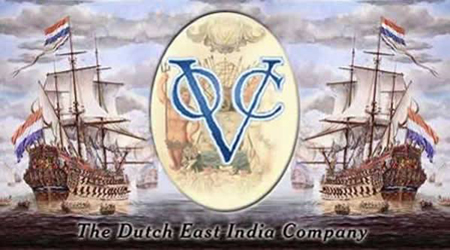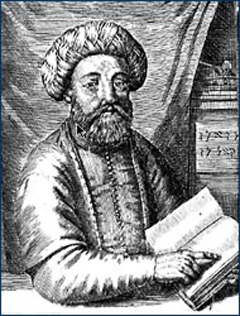The Dutch Period
By Shalva Weil

In 1661 the Dutch arrived in South India and captured Cranganore from the Portuguese. They tried to lay siege to Fort Cochin but the Portuguese held out and the Dutch withdrew, leaving a garrison on Vypin island. The Jews, who had looked forward to the end of Portuguese rule and welcomed the Dutch, were now at the mercy of the Portuguese, who killed several Paradesi Jews and burned their houses. Finally, the Dutch renewed the siege of Fort Cochin and the Portuguese surrendered in 1663.A new peaceful era was initiated. The mudaliar or head of the Cochin Paradesi community, on Shemtov Castiel, stood beside the Dutch admiral when the keys of the Fort were formally handed over.
Cochin Jews became the middlemen for the Dutch East India Company and both Cochin and the Jews flourished. The local Rajahs reiterated their permission for the Jews to practice their religion fully. The Paradesi Jews maintained direct contact with the Jews of Amsterdam. A letter in Hebrew and surviving in Latin translation written by David Rahabi in 1676 describes the Jewish community.
In 1686 the Cochin Jewish community was visited by four Jews from Amsterdam. One of them, Mosseh Pereyra de Paiva wrote a detailed report in Portuguese on the Cochin Jews, including the Malabar Jews in Ernakulam. The report contained a useful list of names, as well as descriptions of ritual practices. De Paiva reckoned that there were a total of 465 Malabari Jewish families in nine congregations. The Dutch chaplain Visscher confirmed these statistics claiming that they numbered 2,000 souls. The wealthier Paradesi Jews were estimated to number around 25 families in the same period. By 1767, Ezekiel Rahabi (1694-1771) wrote that they had grown to 40 families.
The Paradesi synagogue, established in 1568, became on of the major sites in Cochin. De Paiva wrote that it was "very beautiful and of the size of that of London". In 1760, the famous clock tower with Hebrew, Roman, Arabic and Malayalam characters was erected. Two years later, Ezekiel Rahabi, now the major agent on the Malabar coast for the Dutch East India Company, laid the blue willow-patterned tiles from China on the floor of the synagogue. Rahabi traded in cardamom, pepper sugar, sandalwood and other commodities; he signed his memoranda in Hebrew and reprinted in Amsterdam prayer books according to the Shingli rite. The Cochin Jews became well informed about wider Jewish matters and ere even aware of the dramatic demise of the false Messiah, Shabbetai Zvi (1626-1676). When Ezekiel Rahabi died, his third son David took over as the principal merchant of the Dutch East India Company, but the Dutch rule of the Malabar coast was already beginning to wane.
